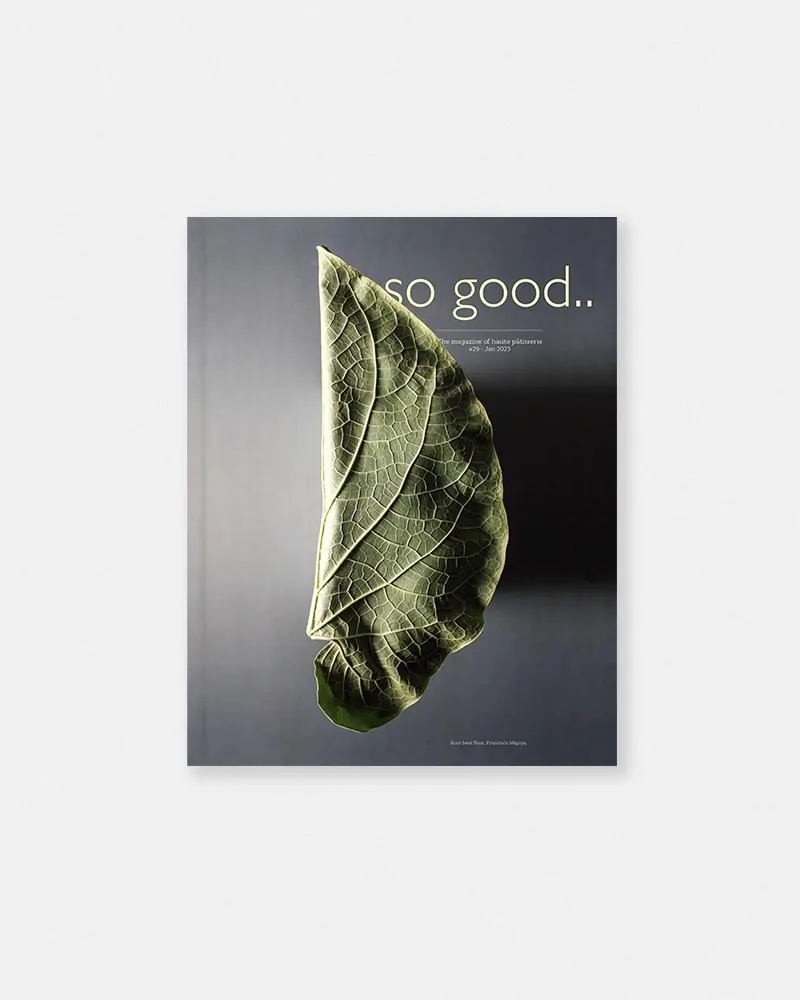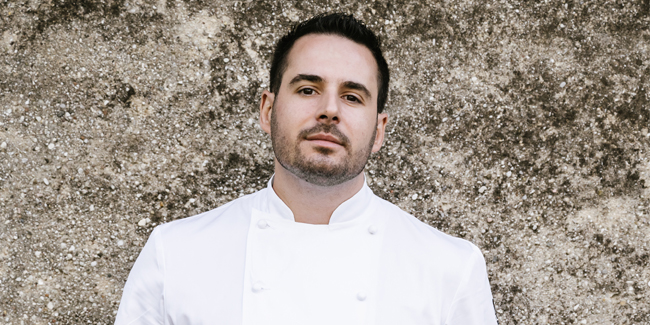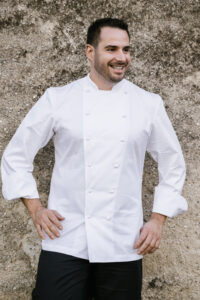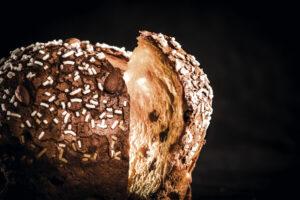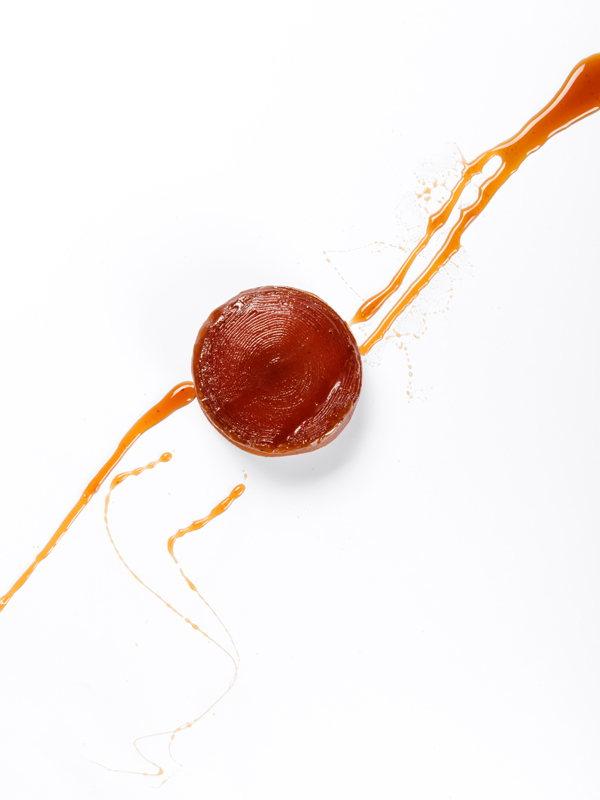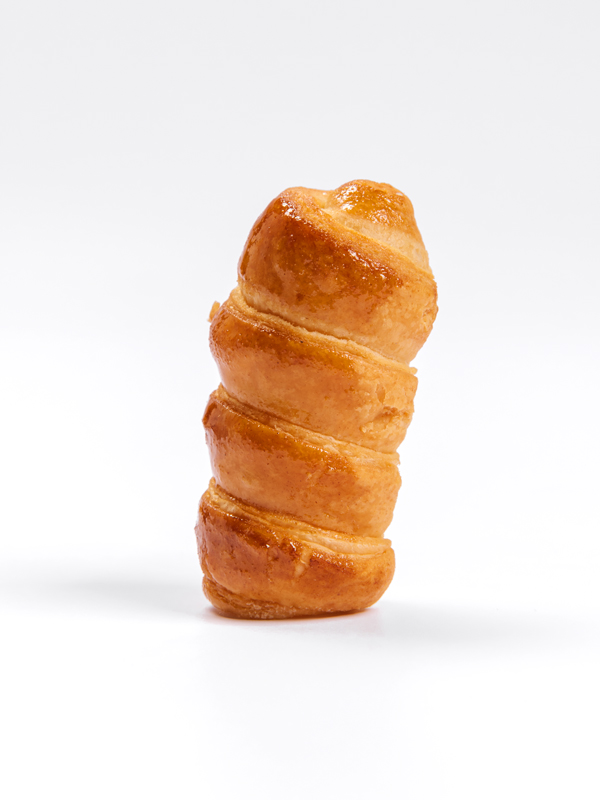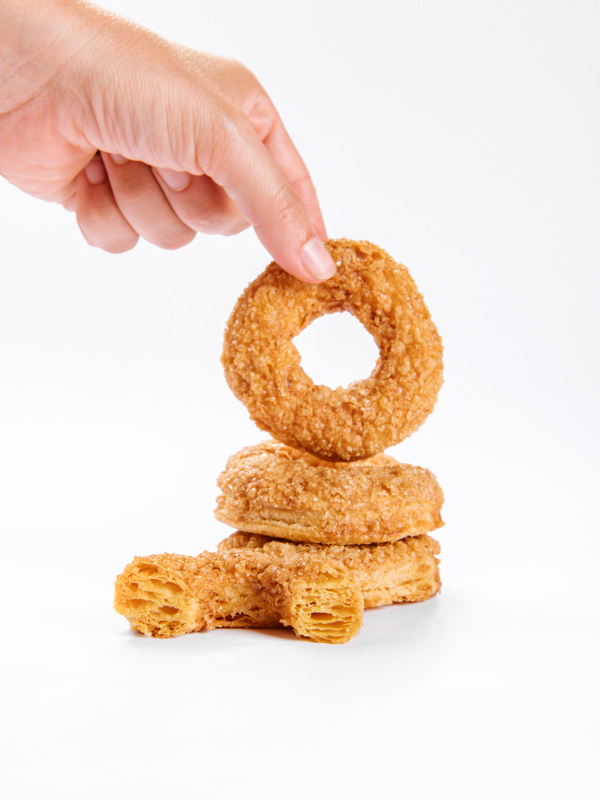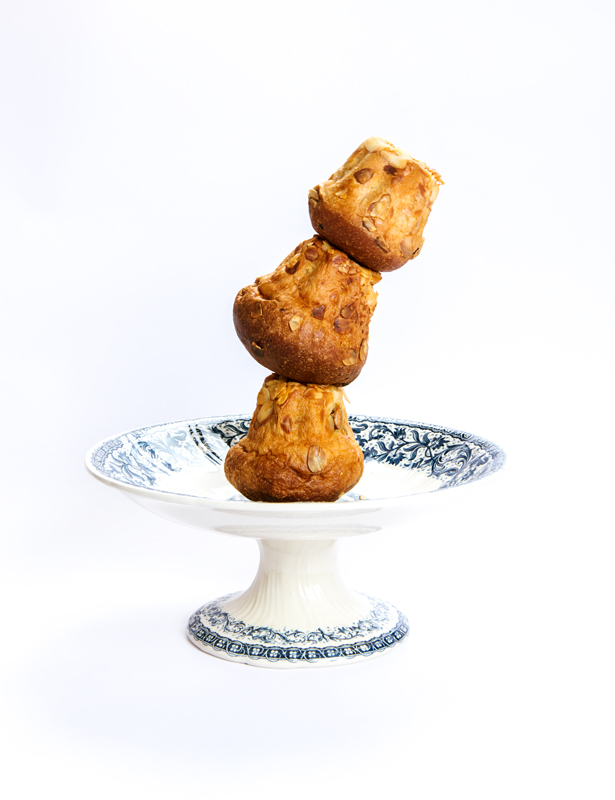Categories Pastry Chef Articles
Andrea Tortora: ‘To innovate is not to create something new, but to continue, maintain and renew a tradition’
Photos: Stefano Butturini
Andrea Tortora has become an interesting figure of the new Italian pastry. New, modern, reflective and attentive to the latest trends, whether related to environmental issues, alternative ingredients or redefining concepts. But first he stresses respect for tradition, aware that this must be his main source of knowledge and inspiration. The key, as he explains in so good.. magazine 29, lies in the reflective gaze: ‘discovering consists of seeing what everyone else has seen and thinking what no one else has thought.’ And it is with this attitude that today he presents us with such classic products as a tarte tatin or a sfogliatine, but in which there is always some new aspect, the result of a reflection that he tries to bring to the present and that serves to reinvent products with decades of history. In addition to a tour of some of the best European and world kitchens, with a special stop at the three-starred St Hubertus in San Cassiano, this Italian chef became a firm believer in online pastry sales a few years ago, long before the pandemic made us all think about the attractiveness of this channel. AT Pâtissier is not so much commercially minded as it is a desire to adapt to a philosophy that is sensitive to issues such as sustainability and waste, producing only on demand. The focus of its activity is on great fermented doughs, with panettone at the forefront. He has also been able to give a personal touch to these mythical lievitati, with original creations such as the PandUovo, a special Easter eggshaped pandoro (discover the recipe).
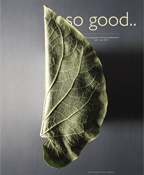
What is AT Pâtissier?
AT Pâtissier is 100% Andrea Tortora. I have expressed my philosophy in a rigorous, minimal, essential collection. AT Pâtissier explains who I am, my travels, my idea of pastry. The starting point is certainly tradition, which must go hand in hand with innovation, culture understood as a wealth of experience and knowledge, but also with a special attention to the world around us and to the fragile natural balance.
‘The kitchen in this sense has evolved, with philosophies increasingly closer to sustainability and new food needs, while the pastry has not had the desire to grow, it is too tied to this atavistic concept of richness and fat.’
Why did you choose an online business model?
My ecommerce is more a reason than a consequence of our philosophy. Today we often talk about sustainability and waste, it is a recurring theme in gastronomy debates. Waste is fought at the beginning of the production chain, and sustainability must be the driving force behind a philosophy. In our case, we have thought of a production process that does not contemplate discards. How? We produce only what we sell. To a certain extent, when I go into production with my guys, I know exactly how many kilos of dough to prepare and how many panettones to bake. The next day these panettones will be sent off and be delivered to our customers. Each panettone is booked and paid in advance, and only then produced. Therefore, even the raw material supply can be exactly adjusted to the demand, without the need to overstock. It is an innovative process far removed from everything that happens in a traditional Italian pastry shop, which only produces to fill a display case and then sell. And it allows us to guarantee our customers the freshest product. Fresh is better, freshness is the real luxury. In the next two years of AT Pâtissier, I want to expand this philosophy also to the rest of the pastry offer, not only to doughs, but to cakes, breads, breakfasts… I would like to create experiences before having a point of sale or a showcase. The customer, by booking, will be able to sit at a table and will be surrounded by attentions with which to make a sweet itinerary, hot or cold, freshly baked, even savory. The luxury will be the gestures, the time you dedicate to a person, the attention and the whole sensory experience.
Who are your references in relation to products such as panettone?
I come from a family of pastry chefs for four generations. When I was little I was surrounded by the magic of lievitati, I was fascinated by watching my grandfather create those deeply aromatic pâtons and watching them grow and develop. That is surely my first inspiration. Among the great Italian professionals, Iginio Massari is the one who dictated the rules of artisan panettone, so it is undeniable that he is the main reference of the generation to which I belong.
‘I like to stay in the kitchen, I like the atmosphere of sharing spaces, techniques and ideas that exists between cooks. I like the contamination that the pastry can receive from the savory cuisine.’
What has happened at AT Pâtissier in recent months?
So many things have happened: I’m finally back to traveling for real, major events are back in the spotlight in the world of food and wine. I was born in a family bakery, but since the age of 18 I have always worked in the kitchens, my first job at the Bauer in Venice was as a cook in the antipasti station. I like to stay in the kitchen, I like the atmosphere of sharing spaces, techniques and ideas that exists between cooks. I like the contamination that the pastry can receive from the savory cuisine. And sharing kitchens and stages with international chefs again, undoubtedly led me to reflect on my idea of pastry. Reflections that have always been present, but that I have updated in recent months, achieving incredible results. Times are changing, the kitchen in this sense has evolved, with philosophies increasingly closer to sustainability and new food needs, while the pastry has not had the desire to grow, it is too tied to this atavistic concept of richness and fat, imperturbable in the face of seasonality.
Do you want to transfer culinary concerns to the pastry field?
At AT Pâtissier, we are making certain choices. For example with flour, last year we studied with our mill a 0 flour, which is more reduced, but which, thanks to a precise technological study, allows us an optimal result, even better, with all our leavened doughs. Or with the egg, we were among the first to align ourselves with a European regulation which adjusts the amount of carotenes allowed in food. As a result, our customers will find a less yellow panettone, and this is not a sign of lower quality but a sign of our concern for animal welfare and health.
‘Our customers will find a less yellow panettone, and this is not a sign of lower quality but a sign of our concern for animal welfare and health.’
Can only one ingredient do so much?
Now it’s butter’s turn. It is not that we want to do without or change forever, but I wanted to turn my attention to the sector of alternative food requirements, for example towards those who cannot consume butter, nor lactose or casein in general. We have studied a lievitato without butter, which to be strict we cannot call panettone, but which in the end is whatever we want it to be. Instead of a dairy butter, we opted for an Italian olive oil. And we try to put the attention not on what is missing, but on what is. The results have been exceptional so far.
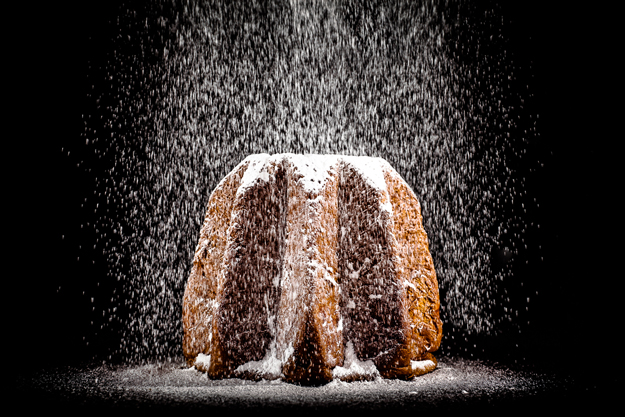
How would you summarize your creative philosophy?
My idea of pastry is a balance between that subtle line that divides tradition and innovation, what has been handed down to us and our creative impulses. This inseparable link that unites tradition and innovation, the new and the old, and which in my opinion are indispensable to each other. Let’s start with tradition. I like to go back to the etymology of words and tradition comes from the Latin ‘tradere’, which means ‘to hand over’. That is, it is a gesture of relationship, which requires the presence of two actors: one to deliver, the other to receive. If the latter is absent (as when the letter carrier calls and no one answers) the delivery fails, no tradition is possible. This means that tradition does not live in the past but in the present. We must make it possible, also by adapting it to needs that have changed over time, because everything is movement, and all things are alive.
To innovate now has become an imperative while tradition indicates by definition a rejection of the new, of progress and dynamics. However, innovation and tradition should not necessarily be two antithetical concepts: when, in fact, to innovate is not to create something new, but to continue, maintain and renew a tradition. In short, innovation and tradition are inseparable concepts. Rebellion is essential for innovation. When we constructively break the rules, explore and let ourselves be amazed instead of simply following existing procedures, our ideas are more innovative. Curiosity and innovation go hand in hand.
‘When we constructively break the rules, explore and let ourselves be amazed instead of simply following existing procedures, our ideas are more innovative.’
Is that what you have materialized in the creations you have prepared for so good?
The desserts I present to you revisit this inseparable link of tradition and innovation: they are sweets that tradition has handed down to us, such as tarte Tatin or Sfogliatina, but which I have adopted and re-discovered in a new key. ‘Discovering consists of seeing what everyone else has seen and thinking what no one else has thought.’ Therefore, we must not be content to pass on what we have received through tradition, but we must add something new.
